3/2005
AGC Autorail Grande Capacité
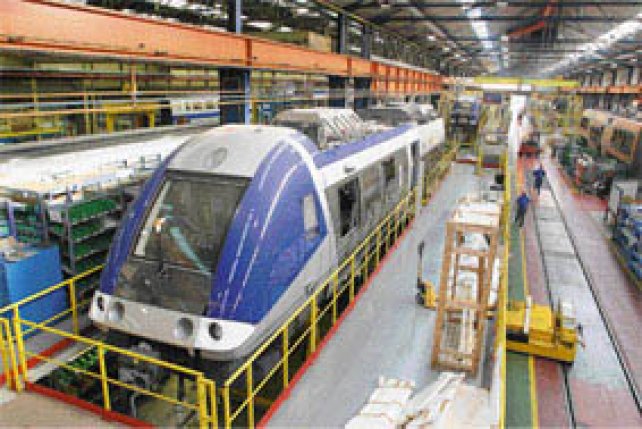
After a long period during which SNCF concentrated its investment into developing and upgrading its long-distance routes, including the still-evolving TGV network, the company is now turning its attention to developing the potential of its extensive secondary network and renewing the fleets of trains used on the latter. This is the responsibility of the TER (Train Express Regional) division of SNCF, which is in the process of acquiring a batch of 500 part low-floor AGC EMUs, EDMUs, and DMUs from Bombardier.
The scene inside the final assembly hall at the Crespin works.
Photo: Bombardier
A Portrait Of Regio-Shuttle
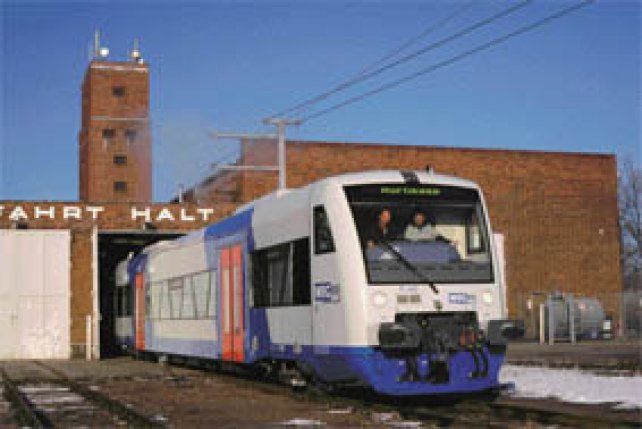
Since 1996, when the first two Regio-Shuttles were delivered to WEG and ZVS, no fewer than 354 of these versatile bogie railcars have been ordered for use both by other open access operators right across Germany and by DB, representing yet another success for Stadler’s Pankow factory, near Berlin.
VT440 of WEG (Württembergische Eisen-bahn-Gesellschaft, a Connex subsidiary) on 23 November 1999 at Velten depot (near Hennigsdorf). This is where a Stadler Service-centre was established in 2002.
Photo: Sven Klein
ES64U4 - A Radiography
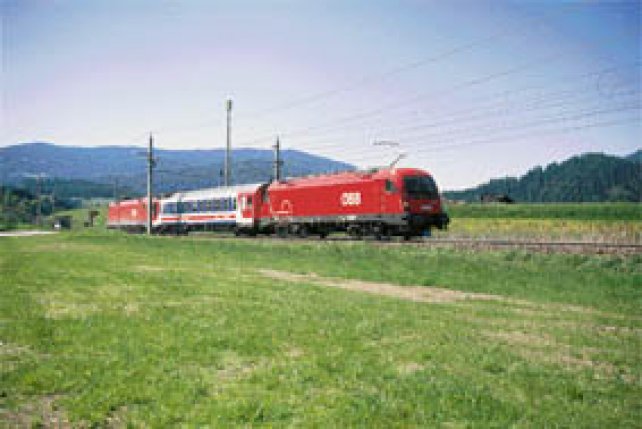
Two important characteristics of the new ES64U4 quadruple-voltage electric locomotive built by Siemens will soon become household terms within the railway industry - „COP“ and „cup“. Characteristics which ensure that the ES64U4 is one of the most cost-effective and flexible solutions available for hauling express freight and passenger trains on international routes. The first representatives of this design to take to the rails are ÖBB's triple-voltage Class 1216 locomotives.
Following its works visit at Linz 1216 003, together with 1016 026 and laboratory coach 99 90 000-3, ran on 25 May 2005 from Linz to St. Veit a. d. Glan. On 26 May test runs over the sinuos Südbahn started, between St. Veit a. d. Glan and Knittel-feld. Test train 93958 is seen here near Neumarkt in Steiermark.
Photo: Kurt Feuerfeil
Innovative Traction Motor Series For Low-Floor Vehicles
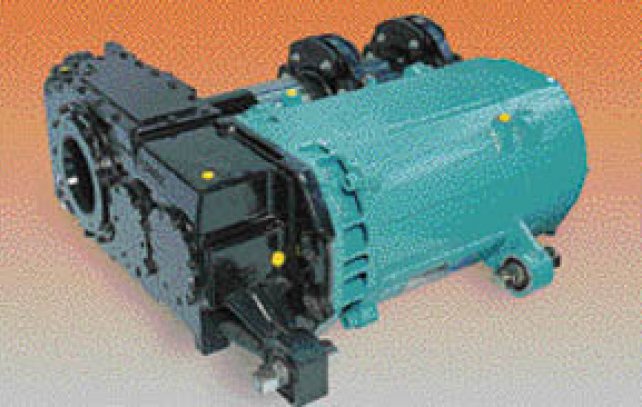
Exacting requirements are placed on modern light rail vehicles. A boarding height along the entire length of the vehicle, for instance, means that the floor height must also be low, leaving only a restricted space for installing the gear unit and traction motor drive system. VEM Sachsenwerk GmbH has successfully faced up to these challenges with its development of a new series of traction motors for low-floor vehicles.
Motor and spur gearing as transverse drive. At the gear unit end, the motor does not have its own end shield, but is instead flanged directly to the gear unit. The transverse drive option is currently proving suc-cessful in „Flexity Classic“ low-floor trams with motors of various outputs, operating in Dessau, Dresden, Halle, Frankfurt/Main, Leipzig and Adelaide.
Photo: VEM Sachsenwerk GmbH
Modular Carriage Interiors From Temoinsa
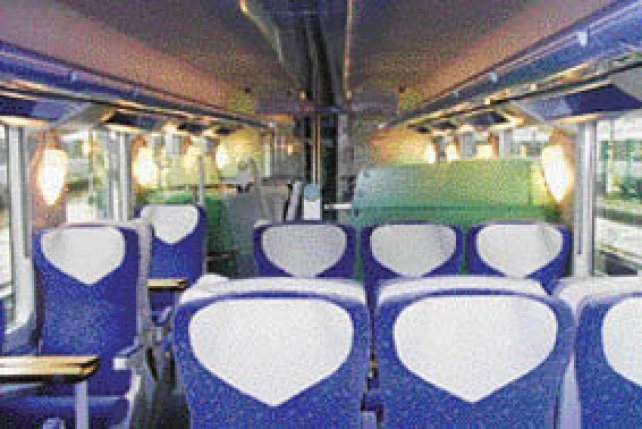
Traditionally, the fitting-out of passenger rolling stock involved a massive, time-consuming, and complex assembly process using a huge number of components from countless different suppliers. In fact, it could be said that the average carriage interior was a made-to-measure product. Original, yes. Cost-effective, certainly not. That is where TEMOINSA stepped in with its concept of a range of standardised, modular interior designs.
Refurbished second class Teoz carriage for SNCF.
Photo: Temoinsa
Voith Maxima 40 C’C’
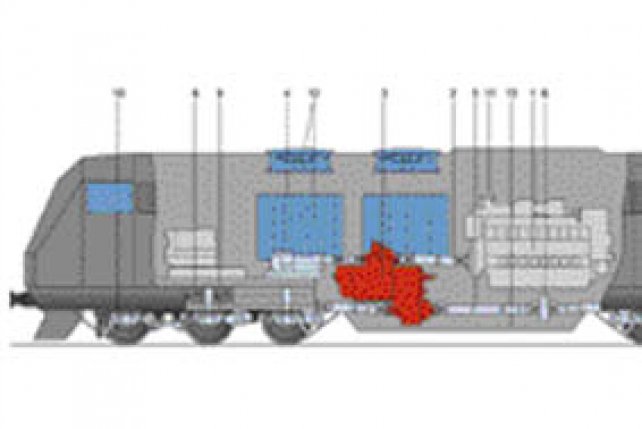
In mid-February 2005 Voith Turbo unveiled its ambitious plan to enter into the field of locomotive manufacture. The company has already started to develop its own locomotive, with construction of the prototype probably commencing this year in readiness for presentation at InnoTrans 2006.
The Maxima 40 C’C’ is designed for both heavy freight work and for passenger traffic, the latter employing models equipped with a train power supply. The locomotive will be designed for various top speeds of between 120 km/h and 160 km/h.
Photo: Voith Turbo
High Speed Thrust Towards Central Europe
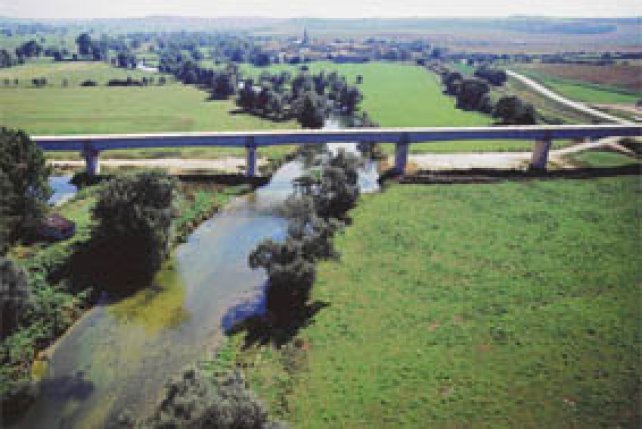
Although SNCF regards the LGV Est as a less profitable venture than its earlier high speed lines, the new railway being built between Paris and Strasbourg offers the potential for substantial journey time reductions between a number of major urban centres both within France and further east.
Meuse viaduct. Part E, section 37, September 2004. During construction a rare species of fish, the pond loach, which was thought to have become extinct in the region, was discovered.
Photo: L. Rothan/CAPA/RFF
And much more!
Cover of 3/2005
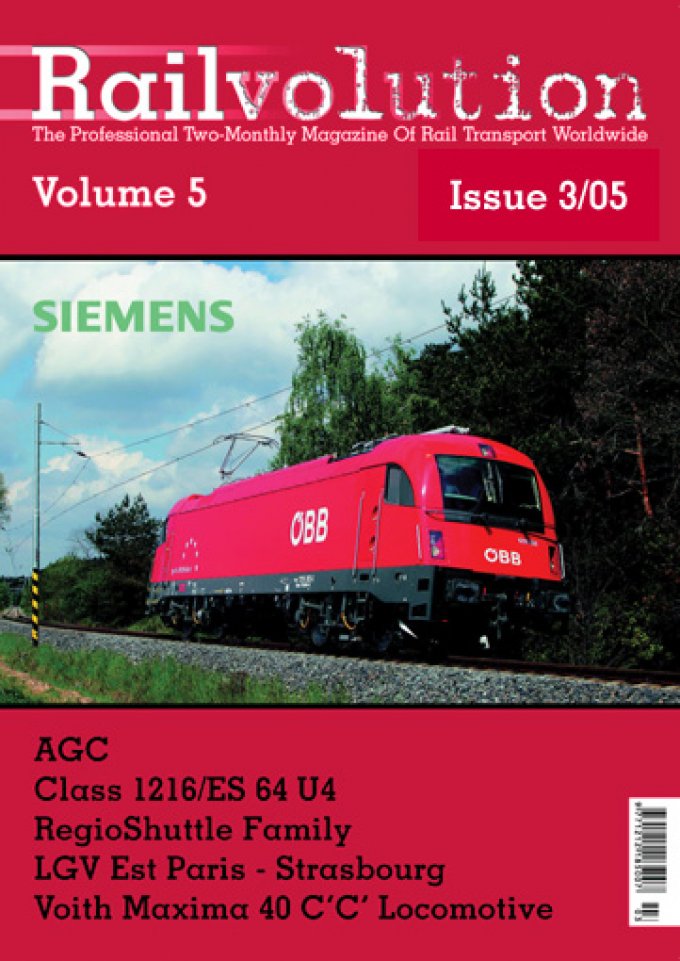
Poster
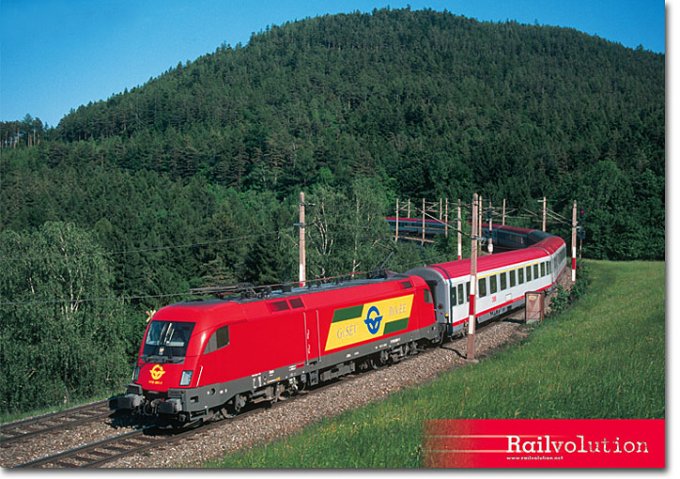
Features: 1116 061 on one of its first GySEV duties, heading EC 558 „Joseph Ressel“ from Graz to Wien, near Eichberg on the northern ramp of the Semmering on 27 May 2005
